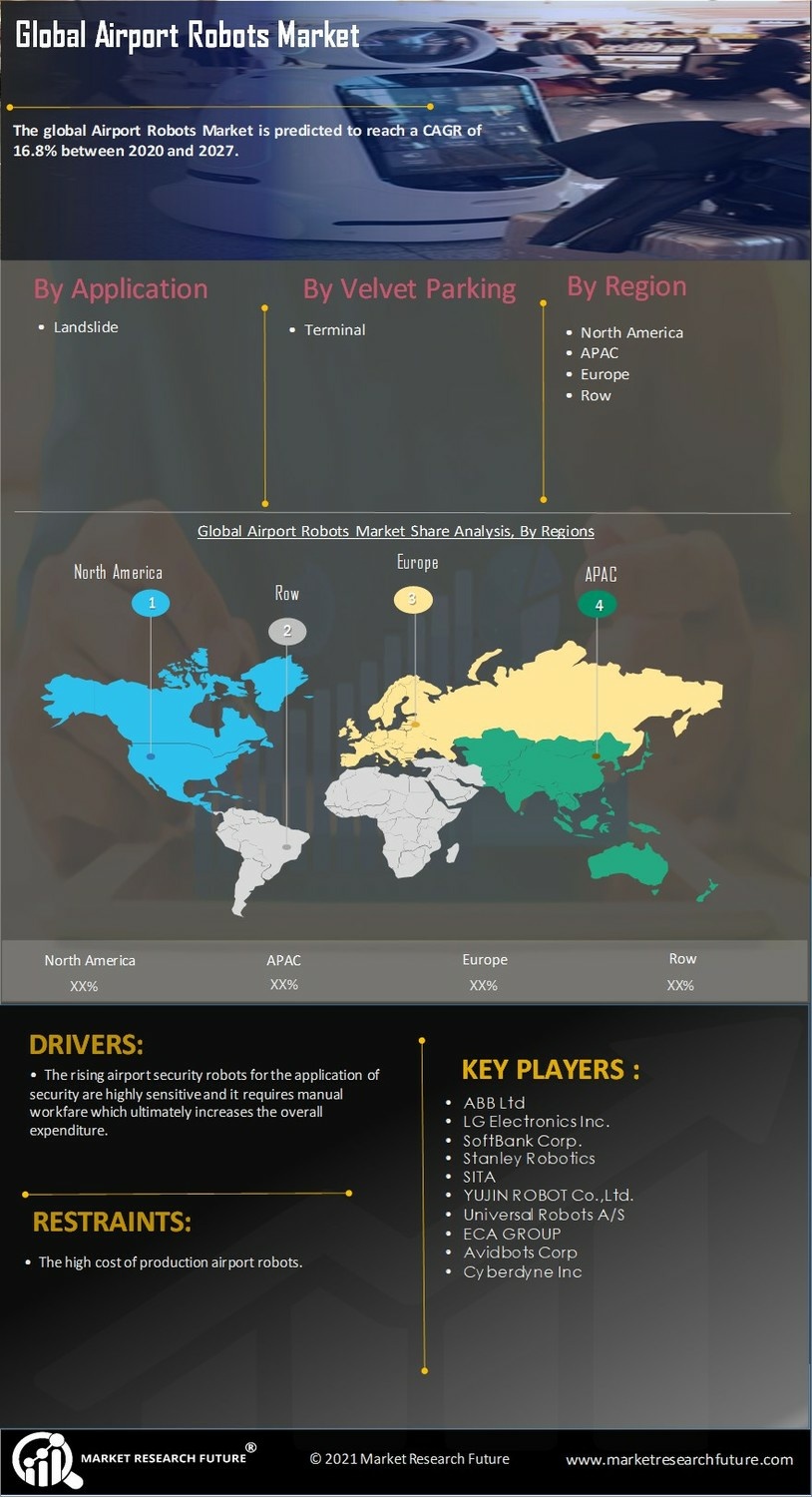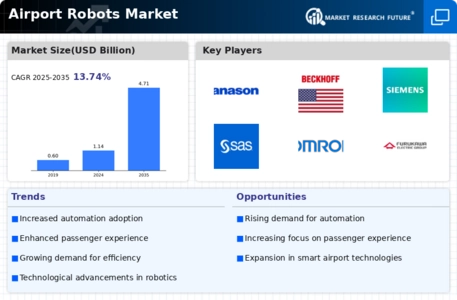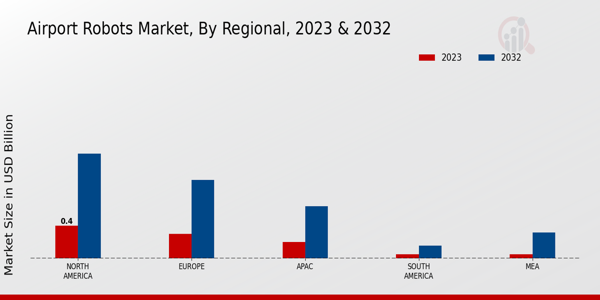Market Growth Projections
The Global Airport Robots Market Industry is poised for substantial growth, with projections indicating a market size of 1.14 USD Billion in 2024 and an anticipated increase to 4.71 USD Billion by 2035. This growth trajectory reflects a compound annual growth rate of 13.77% from 2025 to 2035, driven by various factors including technological advancements, increased demand for automation, and enhanced passenger experiences. The market's expansion is indicative of a broader trend towards modernization and efficiency in airport operations, suggesting a robust future for robotic applications in the aviation sector.
Increased Demand for Automation
The Global Airport Robots Market Industry experiences heightened demand for automation as airports seek to enhance operational efficiency and passenger experience. Automation reduces human error and streamlines processes such as baggage handling and security checks. For instance, the integration of robots for luggage transport can significantly decrease wait times, thereby improving overall passenger satisfaction. As a result, the market is projected to reach 1.14 USD Billion in 2024, with a robust growth trajectory anticipated as more airports adopt robotic solutions to meet rising passenger volumes.
Government Support and Investment
Government support and investment in automation technologies significantly influence the Global Airport Robots Market Industry. Many governments recognize the importance of modernizing airport infrastructure to remain competitive in the global travel market. Initiatives aimed at promoting technological innovation often include funding for research and development in robotics. Such support not only accelerates the adoption of robotic solutions but also fosters collaboration between public and private sectors. This collaborative environment is likely to enhance the overall growth of the industry, as evidenced by increasing investments in airport automation projects worldwide.
Focus on Enhanced Passenger Experience
In the Global Airport Robots Market Industry, there is a pronounced emphasis on improving passenger experience through innovative technologies. Robots are increasingly deployed for tasks such as information assistance, navigation, and even food delivery within terminals. This trend aligns with the growing expectation of seamless travel experiences among passengers. Airports that implement these technologies report higher satisfaction ratings, which could lead to increased foot traffic and revenue. By 2035, the market is expected to expand to 4.71 USD Billion, reflecting the critical role of passenger-centric services in driving industry growth.
Technological Advancements in Robotics
Technological advancements play a pivotal role in shaping the Global Airport Robots Market Industry. Innovations in artificial intelligence, machine learning, and sensor technologies enhance the capabilities of airport robots, allowing for more sophisticated interactions and functionalities. For instance, robots equipped with advanced navigation systems can autonomously guide passengers through complex airport layouts. As these technologies continue to evolve, they are likely to drive further adoption of robots in airports globally. This trend suggests a promising future for the industry, as enhanced capabilities may lead to broader applications and increased market penetration.
Cost Efficiency and Operational Savings
The Global Airport Robots Market Industry is significantly influenced by the potential for cost efficiency and operational savings through robotic implementations. Robots can operate continuously without breaks, which may lead to reduced labor costs and increased productivity. For example, automated baggage handling systems can minimize the need for extensive human labor, thereby lowering operational expenses. This financial incentive is compelling for airports, particularly those facing budget constraints. As the industry evolves, the anticipated compound annual growth rate of 13.77% from 2025 to 2035 underscores the financial viability of adopting robotic solutions.












